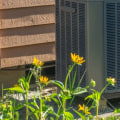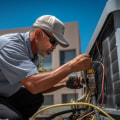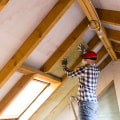The primary objectives of a heating, ventilation and air conditioning (HVAC) system are to help maintain good indoor air quality (IAQ) through adequate ventilation with filtration and to provide thermal comfort.
HVAC
systems are among the biggest consumers of energy in schools, and their main purpose is to keep the air inside your home at a comfortable temperature. In addition to temperature control, these systems also maintain humidity at a healthy level. Air conditioning systems also protect the home and health from dust and humidity-related problems.The goal of an HVAC system is to adjust and change outdoor air conditions to the desired conditions of occupied buildings in order to achieve thermal comfort for the occupants. Energy efficiency and consistent cooling and heating make ductless systems a great option if you're considering upgrading your HVAC system. Moreover, air conditioning alone cannot compensate for the intrinsic characteristics of safety design, such as structural stability, cladding, area segregation, fire protection systems, etc. Since it is the most efficient way to heat and cool a living space, you'll find an HVAC system in every modern home.
This type of HVAC system has individual units located in each room of the house that will cool and heat the indoor air. The installation of split HVAC systems is quite complex; so it should be done under the supervision of an expert. It may seem like an HVAC system does a simple job, but the parts and maintenance are more than simple. While ducts, a component of an HVAC system, can be compared to arteries, HVAC has nothing to do with the human body.
Packaged heating and air conditioning systems are best suited for buildings without sufficient interior space for the components of the split system. The piping system is essential for delivering refrigerant, chilled water, steam, hot water, gas and condensate to and from HVAC equipment directly, silently and affordably. A split HVAC system is the most common and classic type of HVAC system that provides energy efficiency at a lower cost. Even if you're not familiar with what an HVAC system is, you'll be familiar with a thermostat.
A heating, ventilation and air conditioning system, also known as an HVAC system, removes pollutants from the air and conditions indoor air, either cooling it or heating it for comfort. In conclusion, an HVAC system is essential for providing comfortable living conditions in modern homes. It helps maintain good indoor air quality through adequate ventilation with filtration while providing thermal comfort. It also maintains humidity at a healthy level while protecting homes from dust and humidity-related problems. Furthermore, energy efficiency and consistent cooling and heating make ductless systems a great option if you're thinking about upgrading your HVAC system.



